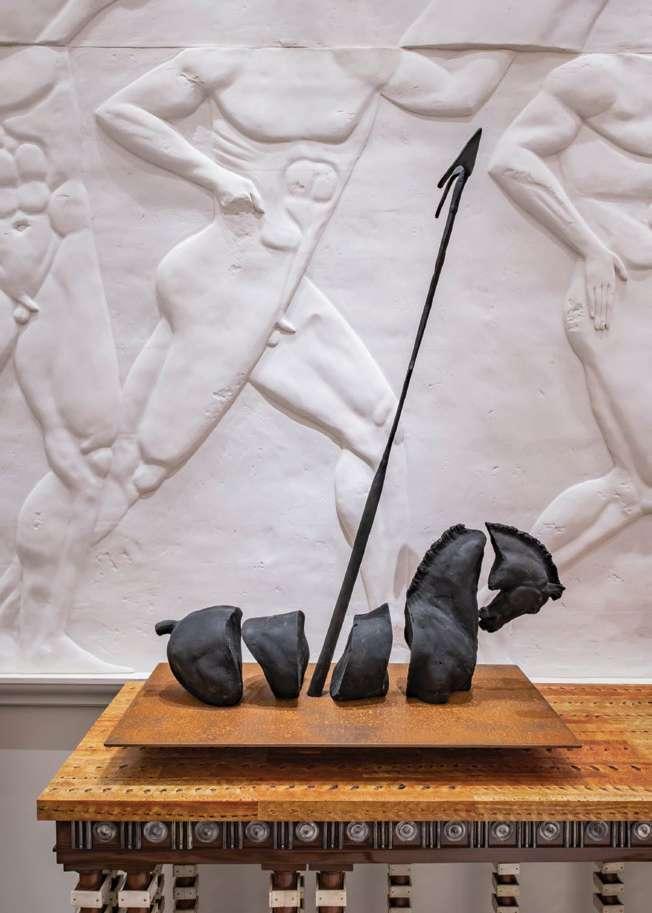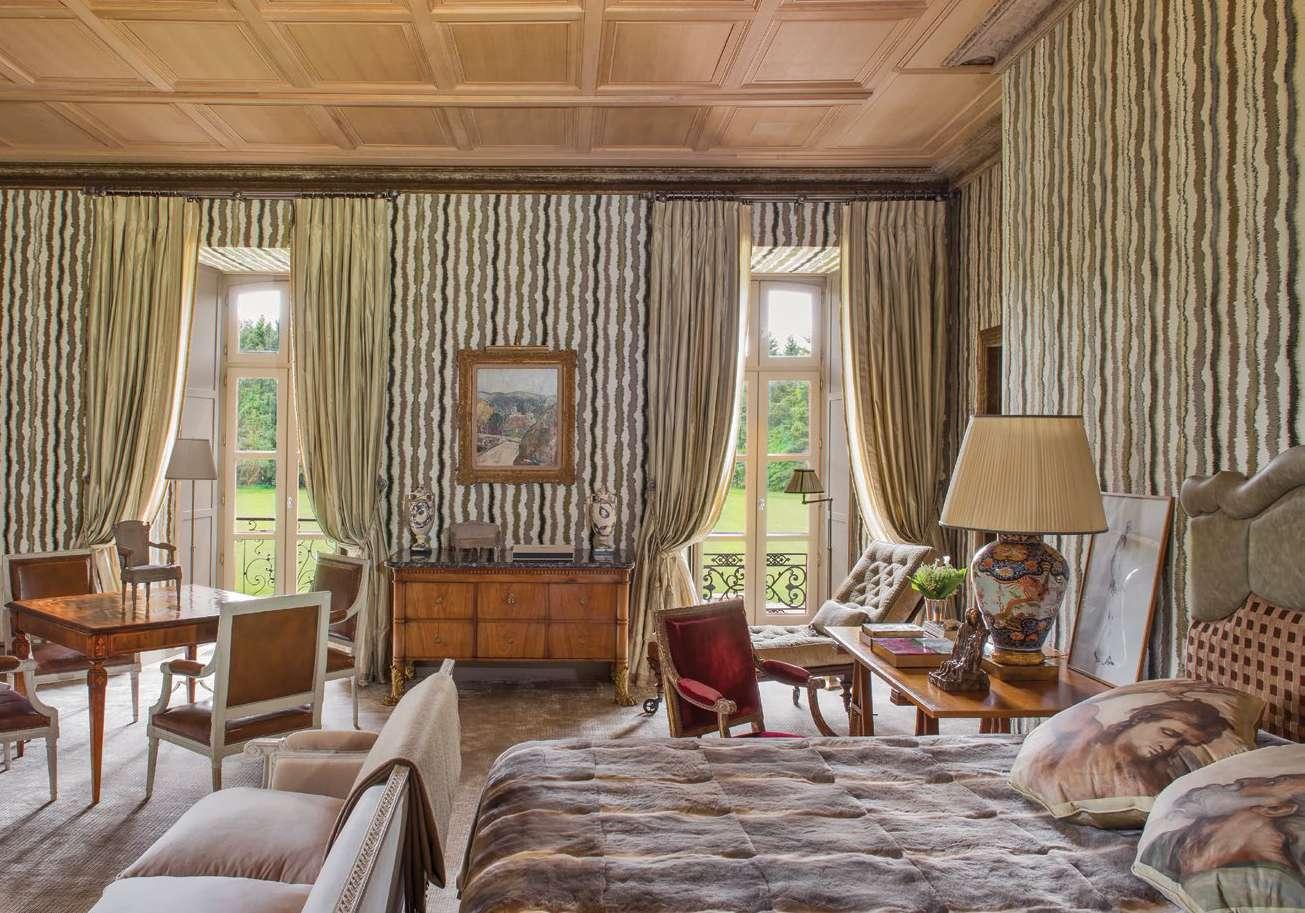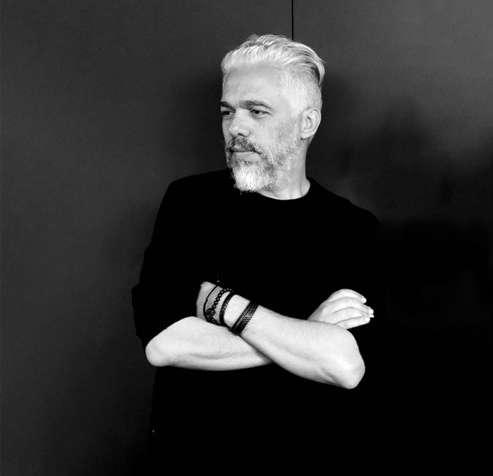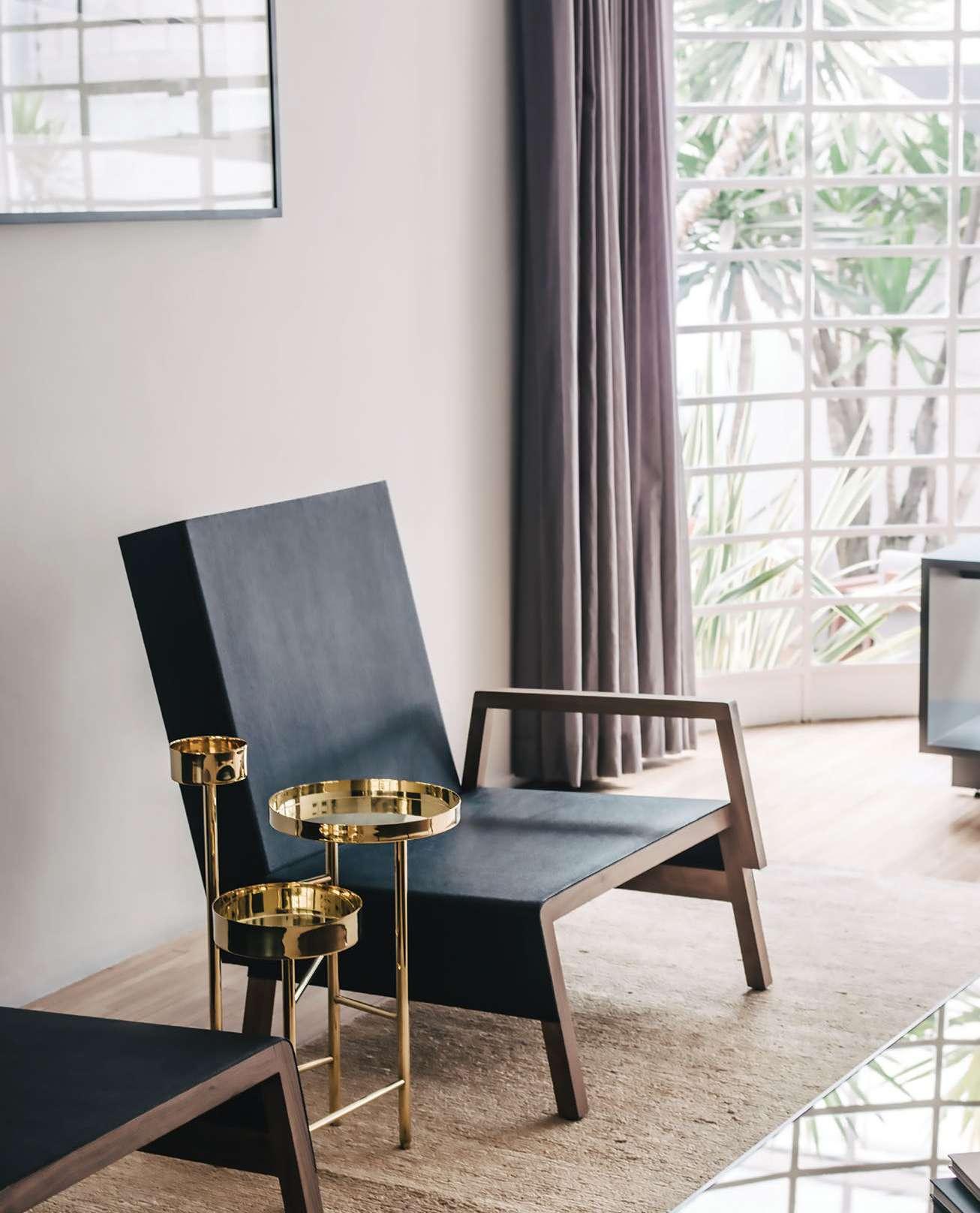
8 minute read
INTERVIEW WITH JUAN PABLO MOLYNEUX
worlds. ” Juan added. His projects always stimulate his imagination, and the challenges of each project oblige Juan to find new solutions, to build on his experience and passions. Also, the variety of clients also pushes him out of his comfort zone, each client with their own tastes, lifestyle, and culture. Building a fantastic career, Juan has almost achieved everything in life. The journey was long and it is not over, he proudly claims, and any experience in a man s life has meaning and influences his present and future, and among them, his country of origin is of great importance.
“ Chile is the country of my childhood and my family, and it therefore occupies a place apart in my heart. That said, I have always traveled a great deal, even since my childhood. At the age of 20, I went to Paris to complete my studies at the Ecole des Beaux-Arts and the Ecole du Louvre. I even undertook a coming-of-age road trip in what was called, then, the USSR ! After that, I worked for a few years in Argentina in a design firm that I established there, then I went to New York where I opened the design firm, J.P. Molyneux Studio, Ltd., that exists today. In a few years, I was proud to become an American citizen. More than 20 years ago, I also founded my firm s Paris office. As you can see, I do not care about borders, as I consider myself a citizen of the world. ” Juan affirmed. Also, regarding his ambitions, Juan amusely said one of his ambition, if invited, would gladly decorate the Mars colony.
Advertisement
As you probably know, Molyneux has surrounded himself with a network of exceptional craftsmen. In Paris, they are often the “ Meilleurs Ouvriers de FranceM. O. F. ” ( “ Best Workers of France ” ) or the “ Entreprises du Patrimoine Vivant - E. P. V. ” ( “ Living Heritage Companies ” ), which are official labels created by the French Ministry of Culture. These noted craftsmen collaborate on major restoration projects of historical monuments including Versailles, Fontainebleau, the Louvre, the castles of the Loire or the cathedrals of the Middle Ages like Notre Dame de Paris, and Molyneux is a member of the Board of Directors of major private heritage organizations such as The World Monuments Fund, The French Heritage Society and The American
Friends of Versailles. They raise funds to finance restoration campaigns of many historic monuments, not only in France but also around the world. “ I work with the same craftsmen as part of this personal commitment to cultural and artistic heritage. Through my New York office, I opened the American market to many of these artisans and artists who have thus been able to establish satellite ateliers in the United States. These craftsmen taught me excellence, the refusal of mediocrity and moreover, patience, as their time is not of “ our time ” . Centuries-old skills and techniques are the solid foundation of their unequaled knowledge and capabilities. ” he stated. His greatest pride is to help promote the transmission of this extraordinary craftsmanship to younger generations, for posterity, becoming extremely proud when when he sees 20-year-old apprentices working on his job sites. “ They are the living future of these centuriesold traditions and crafts. ” he completed.
Like any creative process, interior design is subject to the whims of fashion and passing fads, themselves driven by what the industry calls “ trends ” This is all quite normal and part of the universal and very human desire for change and innovation. It also creates a not insignificant economic value, stimulating the market in the sector and bringing opportunities to sell new concepts. When asked about what was the trend at the moment, Juan said he does find it tiresome when, in the name of the latest fashion, the end of tradition is proclaimed yet again and everyone praises the new trends to the skies, presenting them as the true future of interior design. “ I have always been very struck by how short-lived these “ futures ” are ! A new trend rarely lasts more than a decade and a completed project can quickly become dated and stale. A quick look through the specialist press of the last few years, a good reflection of the latest trends, provides plenty of examples.

I believe this debate will repeat endlessly, so it ’ s probably best to keep a cool head.
My real interests lie in something more timeless. I am deeply convinced that quality and excellence are far more important than these artificial and rather sterile arguments. Any quality product has an inherent capacity to stand out from the crowd, and so, by extension, has no need for fashion. ” he explained.
Refusing either to forget the past or to reject innovation, as long as it ’ s good quality, explaining that there is room for everyone. “ I myself am not unequivocal and I like to create very different worlds from one project to the next. Within a single project, I will mix styles, periods, colours, and materials. The sole arbiter is the harmony of the whole and the balance between these components. I design interiors for men and women of their time, fully in tune with their age. I evoke rather than reconstruct. I work with excellence, both old and contemporary, to offer my clients the very best. There is no basic contradiction between true modernity and tradition. It is striking to see just how much the most modern contemporary art is best displayed in a classical setting. Why always oppose rather than try to bring together ?”
The old term ‘ ensemblier , describing an overarching approach to interior design, suits him perfectly, since it expresses the real basis of their work, juxtaposition, and mixture.



In his view, there is nothing worse than false modernity, which it seems to him the most conformist and boring thing in the world. “ You can t scrub out the past any more than you can ignore innovation. This is often hiding something. A certain lack of culture, on the one hand, the inability to recognise the richness of living art and contemporary creativity on the other. Personally, I have chosen to stay open to everything. I want to carry on moving freely from one to the other, without any hindrance to my imagination. ” he complemented.
This sense of continuity also enables Juan to be part, through his designs, of the safeguarding and, above all, the handing down of the main craft industries, something of which he ’ s been particularly proud. But here again, tradition is no barrier to the use of new technology. The craft industries are fully open to innovative techniques such as CAD-CAM and laser cutting, and use the new synthetic materials. This permanent dialogue between heritage and innovation is a guarantee of the very high-quality products that have become a major contributor to our economy. The craft sector, defined in France by the expression
“ Entreprise du Patrimoine Vivant ” or “ Living Heritage Company ” now has its own official label (E. P. V.) and is achieving great success on the export market, helping to stem the influx of poor quality products with little or no added value.
“The French luxury goods industry has built its fine international reputation on the highest quality standards and a culture of excellence. It continues to go from strength to strength and its expertise and topquality products are the envy of the world.” Juan Pablo Molyneux added. With no specific type of client there ’ s no rule in the type of clientele, Juan affirms that for 10 clients you will have 10 totally different personalities with their own specific pasts, their unique sensitivities, desires, and requests. That s what makes his profession so rich. No day is like another. “ I believe that I have the best job in the world that allows a permanent cultural enrichment and a constantly renewed openness to influences. One day, you work on neoclassical Russia, the next day on French Châteaux, and the day after tomorrow on Palladian villas. In my offices, this perpetual movement of the spirit inspires us all to creativity and inventiveness. Enjoying what you are doing is one of the secrets of a successful project. ” he proudly said. Regarding his relationship with his clients, he is always accessible and accommodating with clients from the very first contact, placing a great deal of importance on this availability. Most of his clients are busy people, and he appreciate that they do not have time to waste. “ I always ask them to send me the plans and photographs so that I can have an idea of the potential project even before our first meeting. Then, most often, I want to visit the site and meet with the client in order to get to know each other and to establish a dialogue that will give me valuable insights into what the client is looking for and how far he has developed his requests. ”
At the end of this dialogue, a contract is drawn up for the initial general design phase of the project. It is then for Juan to make a proposal by submitting the general plans of the project and some elevations that allow him to make 2 or 3 “ renderings ” of the main pieces. These color perspectives are very close to the final result both in terms of color, the rendering of materials, furniture, fabrics... Molyneux s customers are often amazed to see how the final result is faithful to the renderings that he presented a few months earlier.
“ What I expect from a client for the project to be fully successful is to be motivated and that at the end of the proposal phase, he has made a decision about my proposals. There is nothing worse than indecisive personalities. Of course, changes are always possible, as long as they do not impact the main lines of a project, its foundations if you prefer. ” he added.
As a global citizen, Molyneux brings a wide-ranging curiosity about all things beautiful to each project he does. His interiors have a strong sense of location about them. They ’ re the result of a long dialogue with the customer. They ve been meticulously made. With over four decades of experience, he accepts and interprets—and reinterprets—the past in his work, building a legacy that will, for sure, endure the test of time.
The native Mexican designer, Héctor Esrawe, is one of the top modern design references in the world due to his creative vision. “ We understand the creative process as something that is contextual, that depends intrinsically on the place, on the person, on the needs, on the audience to be developed. ”


Based in the iconic Mexico City, the Esrawe Studio has positively impacted the modern design industry without forgetting the essence of Mexican design and culture. Whether it is an architectural project or a bespoke piece, each idea is rooted in the sustainability concept and inspired by the country ’ s rich craftsmanship culture. CovetED Magazine had the chance to speak with the designer, where he revealed some exclusive details about the future of the Esrawe Studio.
Born in 1968 in Mexico City, the beginning of Héctor s career wasn t as clear as you might think. The Mexican designer revealed to the CovetED team that he only discovered his passion during college when a professional counselor showed him a book of industrial design that described Héctor s many passions in the first 20 lines. “ I never had a clear understanding when I was young of what I wanted to do exactly in my life. I was attracted by technical professions, like robotics for example, but I never ever even knew about industrial design. When she showed me the book I saw all of my interests were integrated into that one sentence, and I didn t have to read further, I only said: I want to do this ” He later graduated from the Universidad Iberoamericana (UIA) in 1992 as an Industrial Designer. From 1997-2001 he was a Design Professor at UIA, after that










